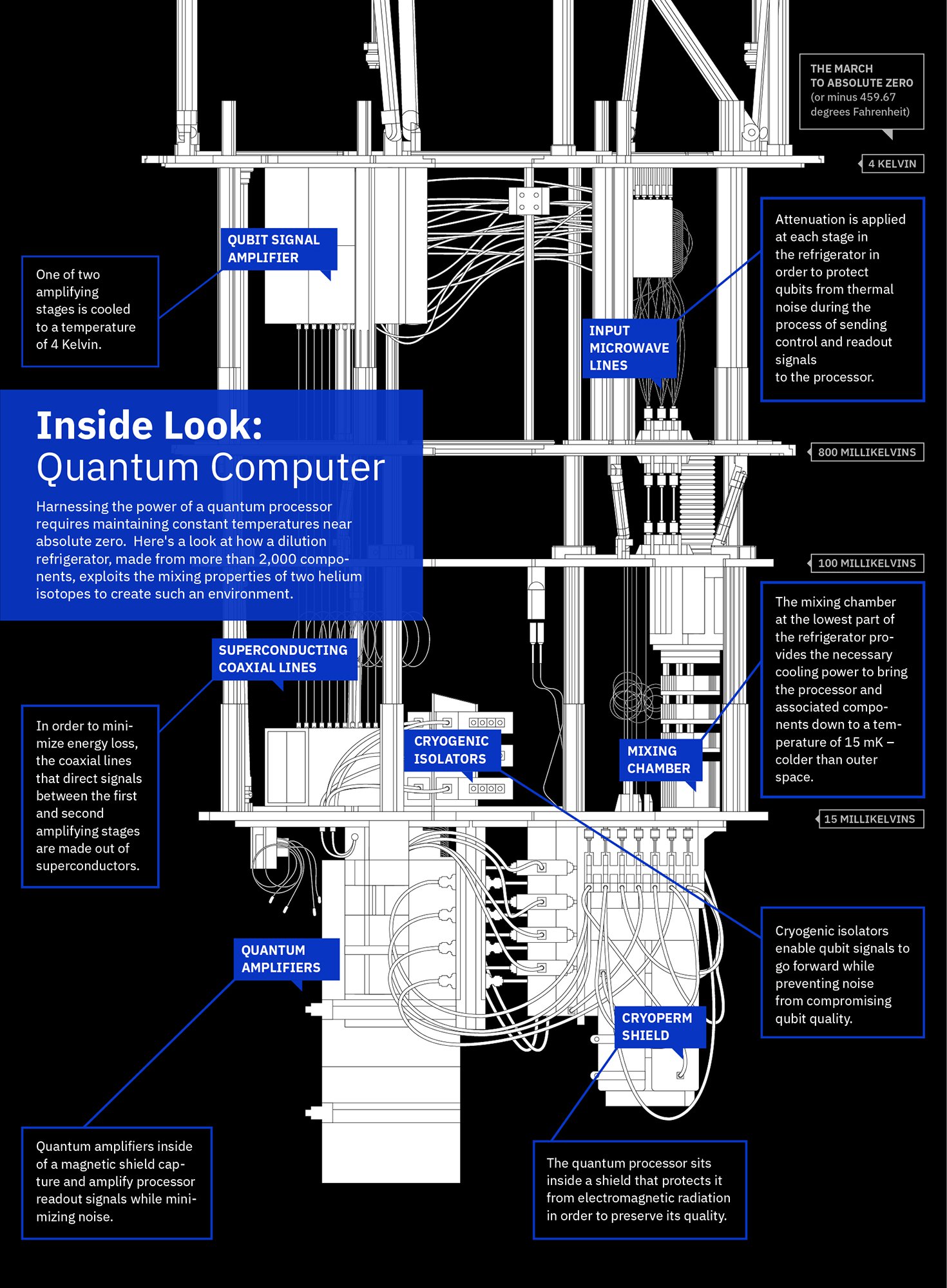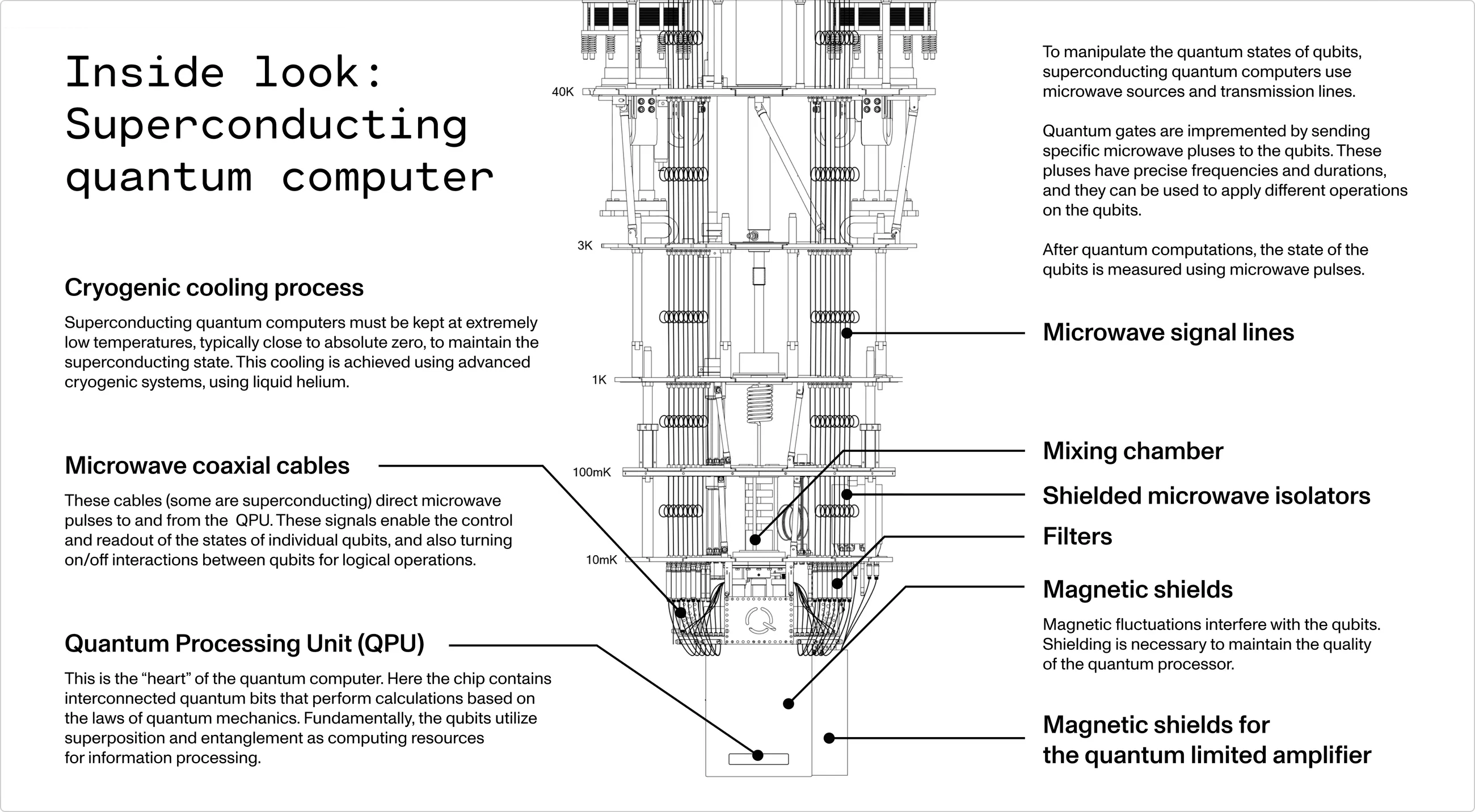Superconducting Quantum Computers – Hardware Dissection
▲A prototype of IBM’s quantum computer. The platform is divided into multiple sections. In the next diagram, we will explain the functions of each component.
Ref: IBM.
▲IBM's illustration of the components of its quantum computer prototype. Since quantum computers operate at temperatures near absolute zero, thermal insulation and isolation from heat noise are critical concerns.
The dilution refrigerator is divided into multiple temperature stages. Through staged insulation, the temperature is gradually lowered from room temperature to below 15 mK.
Additionally, when microwave signals are transmitted into the quantum processor, unfiltered signals may introduce thermal noise that disturbs quantum states.
Therefore, the superconducting coaxial cables carrying signals must include attenuators at each stage to filter out thermal noise.
The superconducting quantum processor (QPU) is placed at the bottom of the refrigerator and is shielded by a magnetic enclosure to block electromagnetic interference.
On the readout side, quantum signals returned from qubits—due to their weak nature—must be amplified by a quantum amplifier, a device that operates near the quantum limit and is itself made of superconducting materials.
To prevent amplified signals from reflecting back to the qubits, isolators are used to ensure one-way signal flow.
Ref: IBM
▲IQM has also launched full-stack superconducting quantum computers and published design diagrams showing the layout inside the cryogenic chamber. A similar staged structure and signal routing scheme can be observed.
Ref: IQM
Originally written in Chinese by the author, these articles are translated into English to invite cross-language resonance.



 Peir-Ru Wang
Peir-Ru Wang